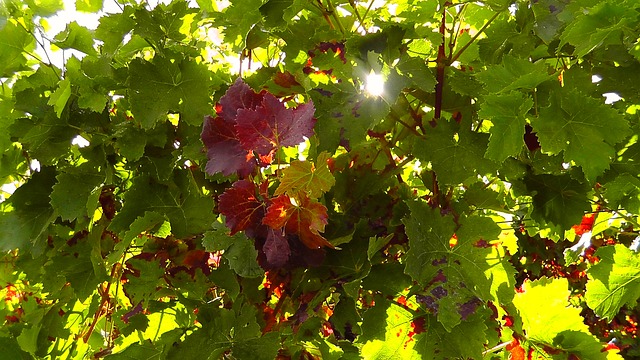As we grapple against the pandemic of COVID-19, an impending dormant outbreak is awaiting its turn. This upsurge has been brewing since some decades and might eventually render humans vulnerable and defenceless. I’m insinuating the wrath of nature, better known as climate change. Our technological and engineering advances have provided many a boon over the centuries but the intangible cost at which they were purchased are now becoming precariously evident. The present generation is exposed to the uncurbed moods of Mother Nature a lot more frequently, in comparison to their predecessors. The globe is warming up. The tornadoes are excessively violent. Tsunamis are more riotous. Earthquakes are further intemperate and wild. The mood swings of Nature are moving towards the extreme. It seems that the otherwise emotionally stable Nature is unable to cope with the (ill) advances of humans, who have over the centuries vitiated the Nature’s nature, thus compelling her to reveal her displeasure and irritability. Our species, true to our nature, will not take it lying down. Instead of pacifying the rage of the Earth by remaining modest in our response, we have sided with our old ally “engineering” to reverse the egregious behaviour of our habitat. This post brings forth the few attempts that scientists have undertaken, to tweak (engineer) the Nature and the consequent responses received from the Mother Earth.
Artificial Ecosystems and its perils
On September 26, 1991, eight crew members entered an arena much like an enclosure consisting of greenhouse gases viz. Carbon dioxide, Nitrous oxide, Methane etc. They called it “Biosphere 2”. The structure was a glass-enclosed greenhouse covering more than three acres that had cost $200 million to build. The design of this huge greenhouse enclosure was much like the way the greenhouse gases surrounded the earth to trap the Sun’s heat and energy, so that the warmth is kept intact even while we are not facing the sun at night time. In the absence of these greenhouse gases, our world would have been a very cold place once the Sun turned its face away. The excess of these greenhouse gases are also harmful, the effects of which we find in Global warming and thereby our attempts to reduce carbon footprints. This massive enclosure was designed to allow the study of ecosystems and human habitation. The sealed facility included five encapsulated ecosystems, including the rainforest, savanna, grassland and a million gallon ocean. A team of scientific advisors from around the world had helped design each one of the concealed ecosystem. The giant structure, situated in the desert outside Tucson, Arizona, was sealed in with four thousand species of plants and animals. The eight person crew were called as “Biospherians”, they were supposed to be the first to inhabit the structure on a series of missions that were to last a hundred years.

Problems started almost from the beginning. The most serious was an unexpected and mysterious loss of oxygen from the air over sixteen months. The oxygen concentration of 19 percent, alarmingly dropped to 14.5 percent. The crew suffered headaches and fatigue. They were put on medication and oxygen was injected into the system, which was supposed to remain closed for the duration of the exercise. Eventually scientists realized that the rich soil in which the crew had grown their plants were consuming the oxygen. This was against the general principle that the plants inhale carbon dioxide during the process of photosynthesis and give out oxygen while storing the carbon in the soil. It is therefore said that growing more plants and trees help stabilize the environment by improving the oxygen content in the atmosphere. It was also noted by the scientists that some of the carbon dioxide that the soil was producing through “soil respiration” was undergoing an unexpected chemical reaction with the concrete walls. This would-be Eden became a nightmare, its atmosphere went sour, its sea became acidic, its crops started failing, and many of its species died off. Among the survivors were crazy ants, millions of them. The crew lost weight, got sick and they began to grow paranoid about the food theft. These observatory notes were mentioned in the New York Times in the aftermath of the famous “Artificial Ecosystem” experiment. A number of scientific papers were published based on the experiment. Some said that the experience could prove useful for understanding the challenges of building terrariums in space but who’s to tell!
Turns out, that it was a perfect example of human arrogance as described by ecologist Penny Chisholm. The thought process that we can just set up an artificial ecosystem and have it go along in perfect long-term equilibrium was just so unfounded.
The Amazon and Methane
In 1993, scientists started an experiment in a patch of the eastern Amazonian rainforest to see how drying the soil would affect the ecosystem. The idea was to simulate a dying section of forest. They built a roughly thirty-by-thirty-foot roof that prevented raindrops from dripping off leaves onto the jungle floor. Previous experiments had shown that water in soil seemed to limit the consumption of methane, a potent greenhouse gas. The scientists figured that drying the soil would increase the amount of methane it sucked in from the atmosphere. The hope was that as the Amazon dried out in the future as a result of climate change, its soil might reduce the atmospheric concentration of an important greenhouse gas. The idea was to reduce the important greenhouse gas (methane) by having it sucked in more by the dried up soil. This they believed would help reduce Global warming.

The scientists tallied the four years of their data, and what they found was just the opposite. Soil that wasn’t protected stayed moist and sucked in methane as expected. But the drier, protected soil emitted methane – in some cases two or three times more than the controls. The results were baffling for the scientists. They could not fathom the report on their work and said that they could only “speculate” that termites who thrived in the dry conditions were the culprit, but they weren’t sure. “We do not fully understand all of the underlying process” they wrote.
Their most salient conclusion? As climate change dries out of the Amazon rainforest there could be “unexpected biogeochemical effects”
Green Algae and Big Fish
In 1997, Algae had turned the surface of several lakes in Queensland, Australia, into a light green soup. “Fish stocking” which was the practice of raising the fish in a hatchery and releasing them into the lake was a regular custom for the enjoyment of recreational fishermen. But Vladimir Matveev, an ecologist with the Australian government, thought that adding an extra-large amount of big fish to the lakes might help control the ugly green blooms.
He was following a theory known to be operative in North American lakes. Matveev was certain that the addition of the large fishes would lead to eating up of the small fishes. The small fishes were accustomed to eating the lake’s crustaceans. And the crustaceans in turn ate the algae. So, by introducing the large fishes which ate the small fish, it was simply made certain that the small fishes in the ecosystem would reduce in number. The reduction in the small fishes, Matveev figured, would naturally have the crustaceans grow in numbers. More crustaceans, also known as “micrograzers”, would mean less algae, since crustaceans ate up the algae. The process was adorned due to its simplicity. The ecologist arranged a five-year experiment in which he added three times the usual amount of Australian bass (large fishes) to one of the lakes, Lake Maroon. After the first year, its ecosystem behaved as he hoped, and the waters remained free of blooms of algae. Success!

When the team were about to celebrate their success, the population of effective micrograzers (crustaceans) suddenly crashed. Then, as they continued adding more Australian bass fishes (large fishes) the situation completely reversed, and a potentially toxic soup of [algae] exploded across the lake. The lake took on a deep green sheen. Later, Matveev reduced the number of the large fishes in the lake, and the lake started showing signs of recovery and the algae started losing its ugly greenish tinge. Matveev believes that there is some sort of limit after which adding big fish stops having a beneficial effect on the food chain. But ecologists haven’t yet understood the dynamics at play.
Check out the latest news on Green Algae bloom in Antarctica’s snow
Agricultural water and Man-made ponds
In 1971, the U.S. Bureau of Reclamation completed work on the Kesterson Reservoir, California. The authorities made sure that eighty seven miles of drains had been laid for the project, which terminated in a set of twelve man-made ponds formed with earthen dikes. The ponds were meant to receive excess agricultural runoff water. It was ideated that relieving the nearby farms of water with excessively high levels of nutrients would aid both farmers and parched ecosystems that received the runoff. The Bureau managers argued that this arrangement would benefit all and with adverse impact to none. The system was trying to use the tainted but nutrient-rich agricultural drainage to help the ecosystem prosper.
A dozen years later, scientists explored the Kesterson Reservoir to ascertain the benefits that they had envisaged. The scientists were shocked to discover that the high levels of a natural element called selenium were killing and deforming embryos and hatchlings of birds. The chemical, usually found in trace quantities, also was killing catfish, plants and other wildlife. The selenium, it turned out, had trickled out of nearby mountains, when the region’s abundant sunlight and dry climate evaporated water out of the wetlands and thus making the poison concentrated in the remaining water.

The water was removed from the Kesterson Reservoir in 1988. And after the clean-up exercise estimated to have cost hundreds of millions of dollars, the scientists found no evidence of selenium poisoning in its wildlife six years later. The U.S. geological survey, however, has identified fourteen other sites in the western United States where agricultural drainage with high concentration of selenium killed wildlife. It seemed like, at best, a cruel trick of Nature and at worst, it was the predictable price of arrogance and tunneled human vision.
The understanding of our habitat is very limited despite the best of the technological arsenal humans possess. The struggle is ongoing to decipher the complex nature of the Nature and unless that is achieved, solutions will be short-lived and at worse, some will boomerang. It remains to be seen, if the scientific efforts to placate and re-create the climate offers best hope or will it turn into our worst nightmare.
Thanks for reading.
Reference Source: Hack the Planet by Eli Kintisch











